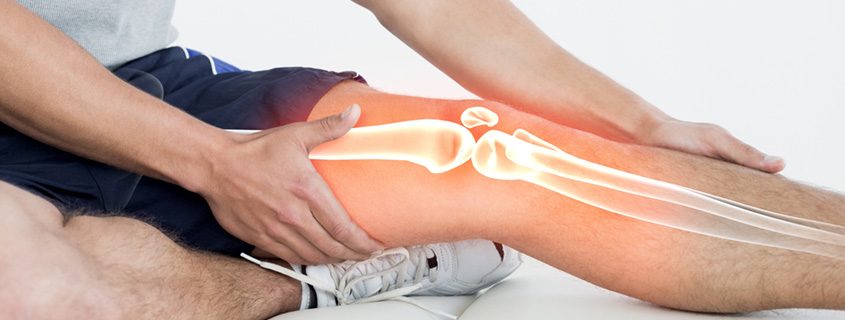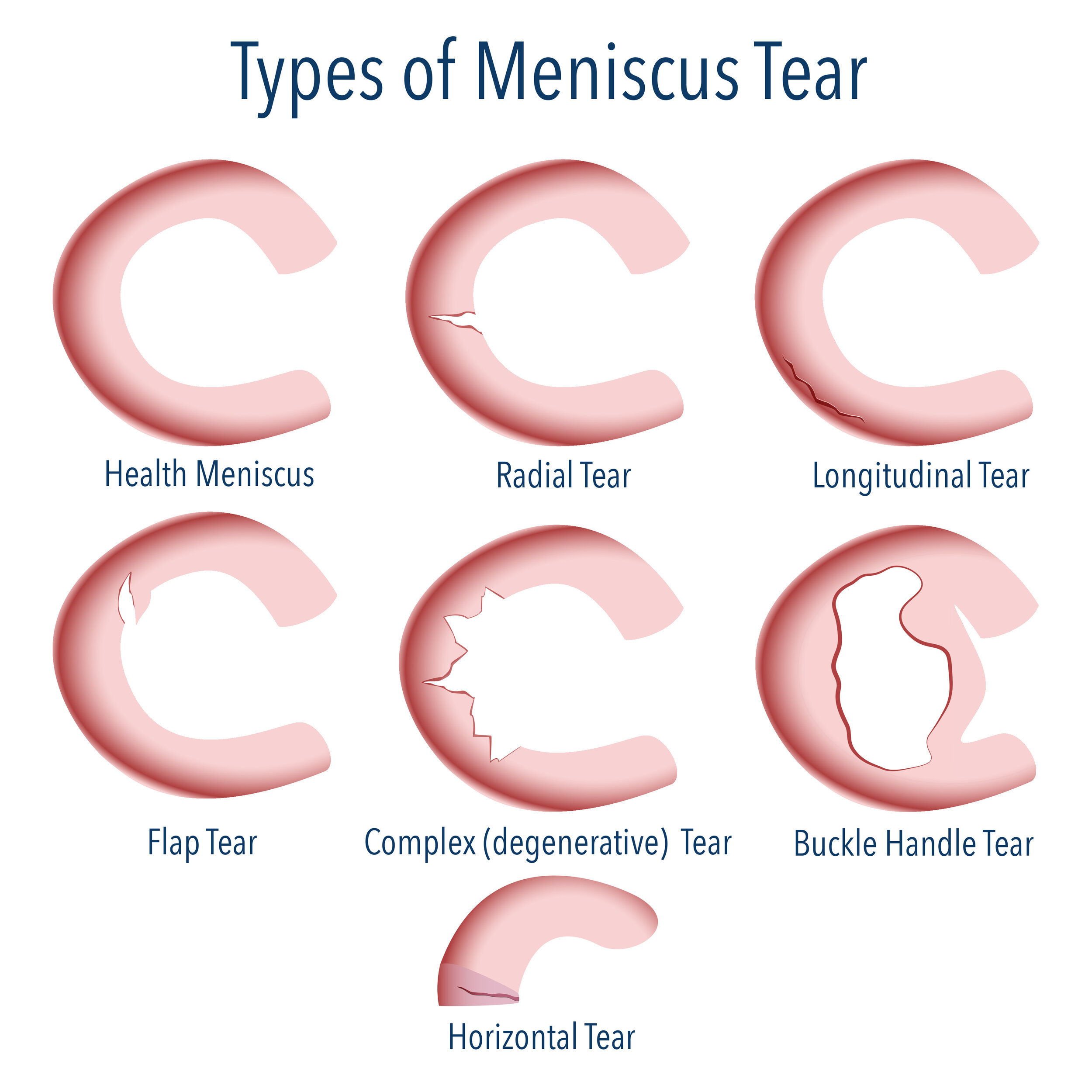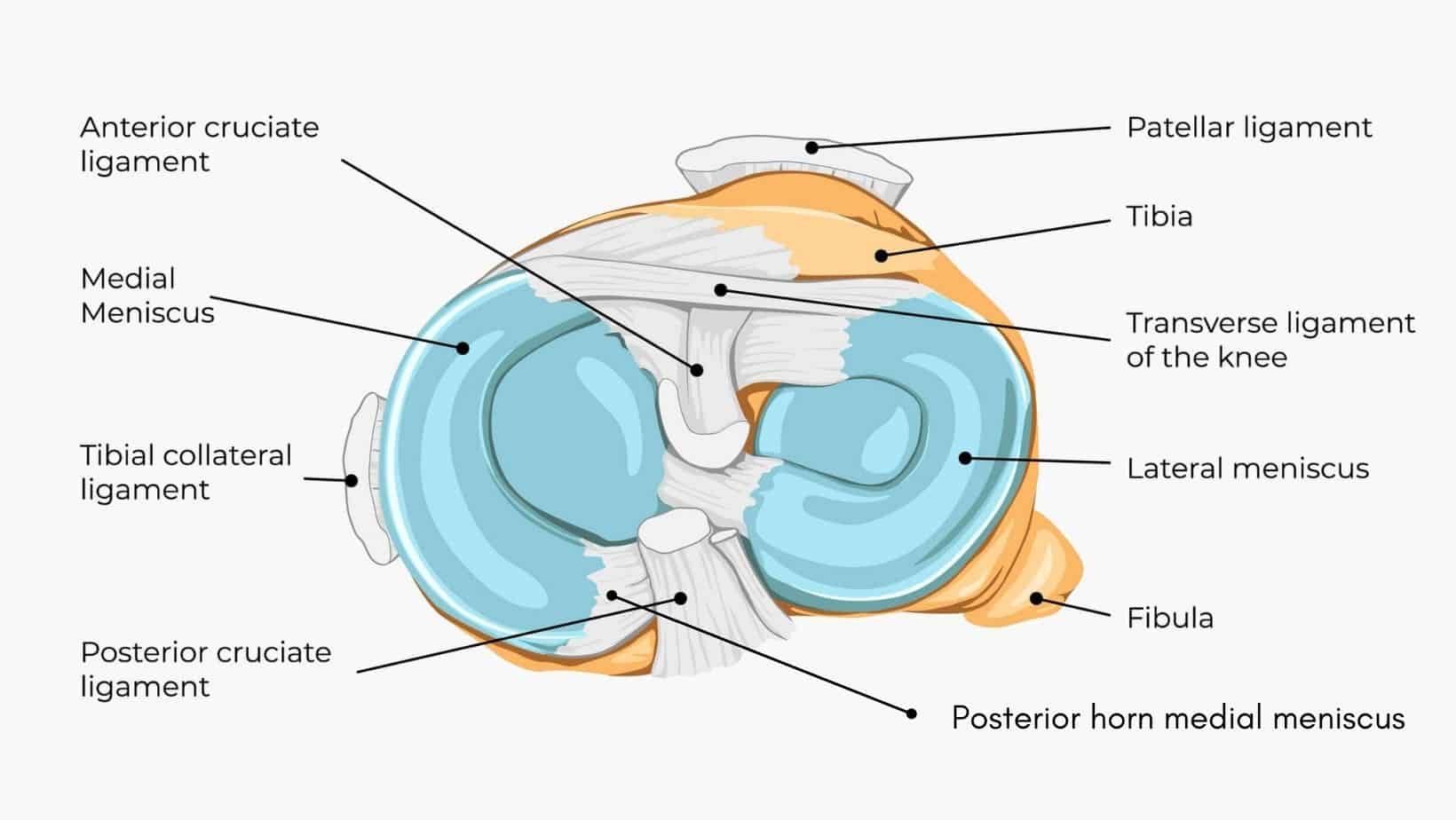Understanding Torn Meniscus

The meniscus is a C-shaped piece of cartilage that acts as a shock absorber in the knee joint. It sits between the thighbone (femur) and the shinbone (tibia), helping to distribute weight evenly and protect the joint from wear and tear.
Anatomy and Function
The meniscus is made up of two parts: the medial meniscus, located on the inner side of the knee, and the lateral meniscus, located on the outer side. Both menisci are crucial for maintaining the knee’s stability and cushioning during movement.
Types of Meniscus Tears
There are several different types of meniscus tears, each with its own unique characteristics:
- Horizontal Tear: This type of tear runs across the width of the meniscus, often occurring in the outer portion. It can be caused by a sudden twisting or rotating movement of the knee.
- Vertical Tear: A vertical tear runs along the length of the meniscus, resembling a crack. It can be a simple tear or a more complex one, such as a flap tear.
- Bucket-Handle Tear: This type of tear is considered more severe, where a large portion of the meniscus tears away and can become trapped within the joint, causing pain, swelling, and limited mobility.
Causes of a Torn Meniscus
Torn menisci are common injuries, often occurring due to:
- Sports Injuries: Athletes who participate in high-impact sports, such as football, basketball, and skiing, are at an increased risk of meniscus tears. These injuries can happen during sudden twists, pivoting, or direct blows to the knee.
- Aging and Degeneration: As we age, the meniscus can become thinner and weaker, making it more susceptible to tears. Degeneration of the meniscus can occur over time due to wear and tear, leading to a gradual loss of its cushioning properties.
- Other Causes: A direct blow to the knee, such as a fall or car accident, can also lead to a meniscus tear.
Symptoms and Diagnosis: Torn Meniscus

A torn meniscus can cause a variety of symptoms, depending on the severity of the tear and the location of the injury. Understanding these symptoms and the diagnostic process can help you receive the right treatment and recover quickly.
Symptoms of a Torn Meniscus
A torn meniscus can cause a variety of symptoms, including:
- Pain: Pain is a common symptom of a torn meniscus. It may be sharp, sudden, and intense, or it may be dull and aching. Pain may worsen with activity, and it may be difficult to bear weight on the affected leg.
- Swelling: Swelling is another common symptom of a torn meniscus. It may occur immediately after the injury, or it may develop gradually over time. Swelling may be caused by bleeding into the joint or by inflammation.
- Clicking or Popping: You may hear or feel a clicking or popping sensation in your knee when you move it. This is caused by the torn meniscus rubbing against the cartilage or bone in the joint.
- Locking: A torn meniscus can cause your knee to lock, or become stuck in a bent position. This is because the torn meniscus can get caught between the bones of the knee joint.
- Stiffness: You may experience stiffness in your knee, especially after periods of inactivity.
Diagnosis of a Torn Meniscus
The diagnosis of a torn meniscus is usually made based on a combination of a physical examination, imaging tests, and arthroscopy.
Physical Examination
During a physical examination, your doctor will ask you about your symptoms and medical history. They will also examine your knee, checking for tenderness, swelling, and range of motion. They may perform specific tests, such as the McMurray test, to assess for a torn meniscus.
Imaging Tests
X-rays are typically taken to rule out other conditions, such as fractures. A magnetic resonance imaging (MRI) scan is often used to confirm the diagnosis of a torn meniscus. An MRI can provide detailed images of the soft tissues in the knee, including the meniscus.
Arthroscopy
Arthroscopy is a minimally invasive surgical procedure that is used to visualize the inside of the knee joint. A small incision is made in the knee, and a thin, telescope-like instrument called an arthroscope is inserted. Arthroscopy can be used to diagnose a torn meniscus, and it can also be used to repair the tear.
Grading of Meniscus Tears
Meniscus tears are classified according to their severity. There are three main grades of meniscus tears:
Grade I Tear
A Grade I tear is a minor tear in the meniscus. It is a partial-thickness tear that does not extend through the entire thickness of the meniscus.
Grade II Tear
A Grade II tear is a more significant tear that extends through the entire thickness of the meniscus, but it does not involve the entire width of the meniscus.
Grade III Tear
A Grade III tear is a complete tear that extends through the entire thickness and width of the meniscus. This type of tear is often referred to as a “bucket handle” tear, because the torn piece of meniscus can flap around in the joint.
Treatment Options

Treatment for a torn meniscus depends on the severity of the tear, your age, activity level, and overall health. The goal of treatment is to reduce pain, improve function, and prevent further damage to the knee.
Conservative Treatment Options
Conservative treatment options are often the first line of treatment for a torn meniscus. These options aim to reduce pain and inflammation and allow the knee to heal naturally.
- Rest: Avoiding activities that put stress on the knee, such as running, jumping, and squatting, can help reduce pain and inflammation.
- Ice: Applying ice to the injured knee for 15-20 minutes at a time, several times a day, can help reduce swelling and pain.
- Compression: Wearing a compression bandage can help reduce swelling and provide support to the knee.
- Elevation: Keeping the injured knee elevated above the heart can help reduce swelling.
- Physical Therapy: Physical therapy exercises can help strengthen the muscles around the knee, improve range of motion, and improve stability.
- Pain Medication: Over-the-counter pain relievers, such as ibuprofen or naproxen, can help reduce pain and inflammation. In some cases, your doctor may prescribe stronger pain medication.
Conservative treatment options are typically successful for mild to moderate tears. However, if the pain persists or the knee remains unstable, surgery may be necessary.
Surgical Procedures
If conservative treatment options are unsuccessful or the tear is severe, surgery may be necessary. There are two main types of surgical procedures for a torn meniscus:
- Meniscus Repair: This procedure involves stitching the torn meniscus back together. This is typically done for younger patients with a tear in the outer portion of the meniscus, which has a better blood supply.
- Meniscectomy: This procedure involves removing the torn portion of the meniscus. This is typically done for older patients with a tear in the inner portion of the meniscus, which has a poorer blood supply.
Comparison of Treatment Options
| Treatment Option | Effectiveness | Risks | Recovery Time |
|---|---|---|---|
| Conservative Treatment | Effective for mild to moderate tears | May not be effective for severe tears | Weeks to months |
| Meniscus Repair | Effective for tears in the outer portion of the meniscus | Risk of infection, bleeding, and failure of the repair | Months |
| Meniscectomy | Effective for tears in the inner portion of the meniscus | Risk of osteoarthritis in the future | Weeks to months |
Torn meniscus? Ugh, sounds like a nightmare! You know what’s even worse? A team with a weak depth chart. Imagine a team like the Vikings, who need a solid backup for their starting players, and they’re stuck with a bunch of guys who wouldn’t even make the starting lineup for a high school team.
Check out the Vikings depth chart and you’ll see what I mean. Torn meniscus is bad, but a weak depth chart? That’s a recipe for disaster.
Torn meniscus? Yeah, sounds like a real pain in the knee. But you know what’s even more painful? Watching the Minnesota Vikings, a team with a legacy of gridiron glory , struggle to make the playoffs. Maybe I’m just projecting, but I swear, a torn meniscus seems like a walk in the park compared to the heartbreak of being a Vikings fan.
